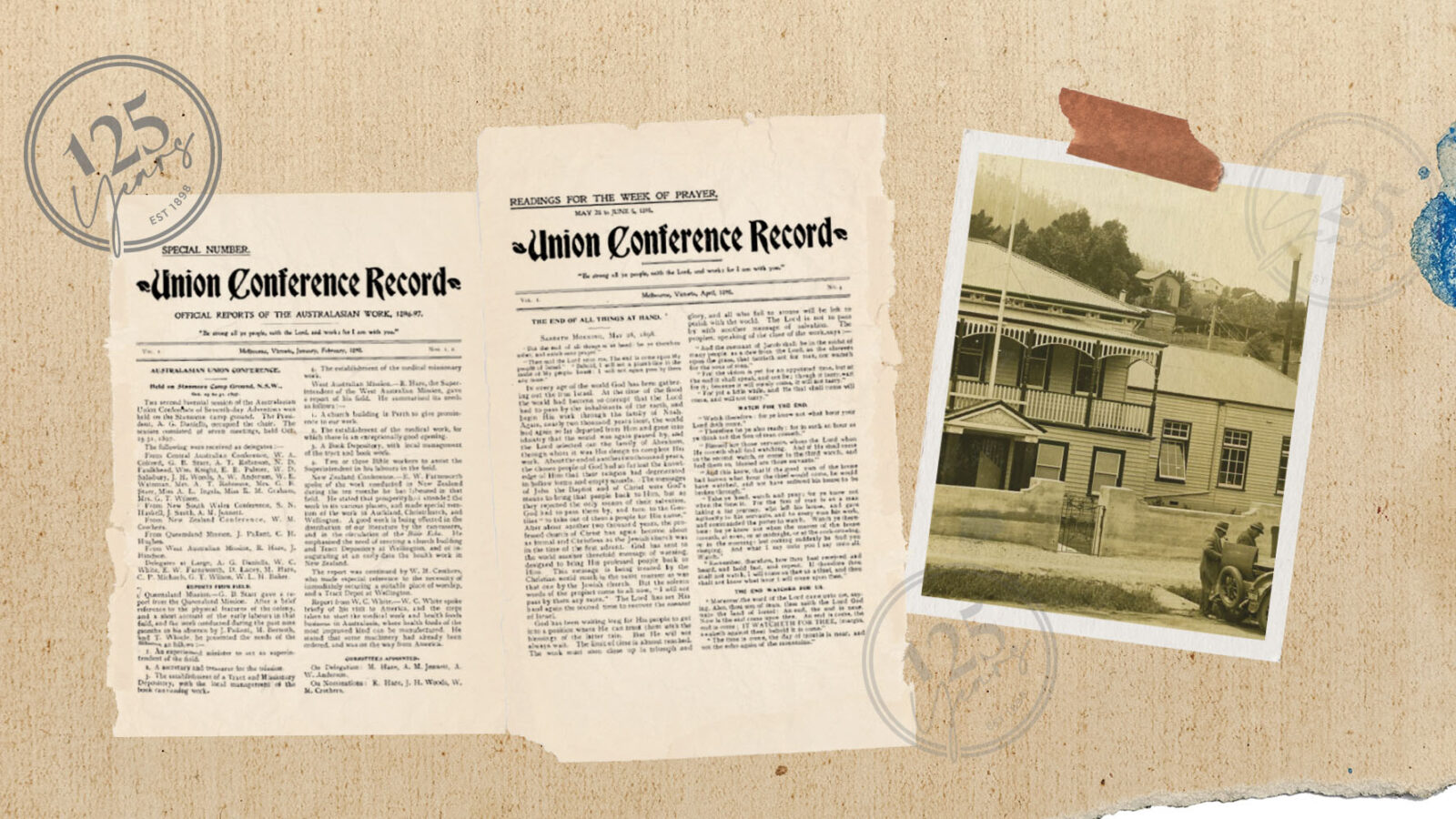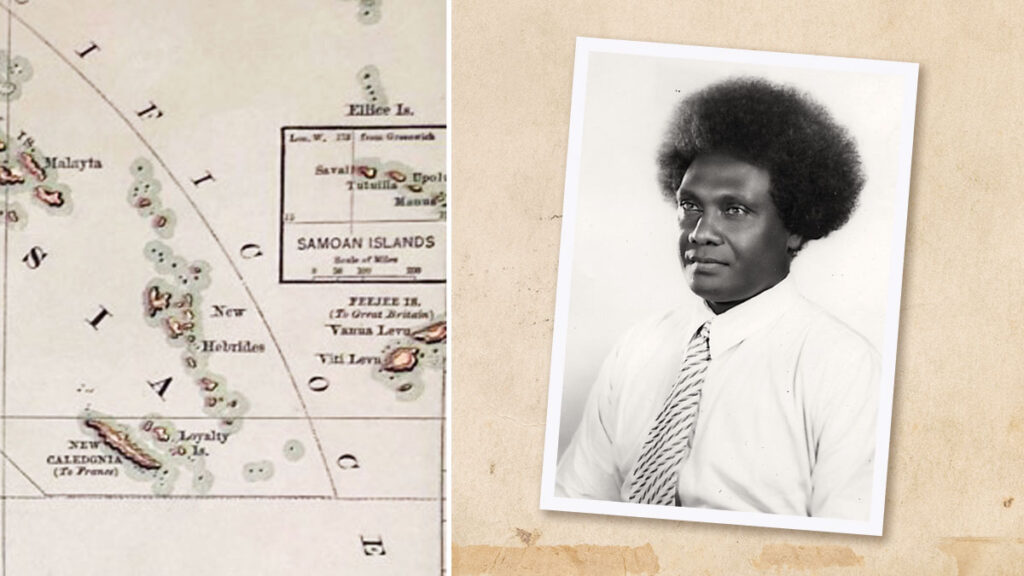Throughout our issues this year, in celebration of our 125 years, we are going to look back at the decades of Adventist Record in all its various forms and highlight some interesting or important things we can discover within.
We’ll provide images from the archives, excerpts of interesting or key stories and any other perspectives that might interest our readers. Throughout the year, we’ll move through the decades and reflect, reminisce and enjoy a stroll down memory lane.
The beginning
The “Australasian Union Gleaner“ was subsumed into the Union Conference Record in January 1898. The Gleaner had been a typewritten report sent to literature evangelists (“canvassers”) reporting on successes and sales of literature. The January-February launch issue reported on the Church’s work and news of appointments from the union session held in late October. It promised that canvassing work would feature in the Record, along with “valuable matter” about the “work in this field”.
“Of the mission of this paper, and the cooperation desired from our workers in the field, we will speak more fully in the next number.”
There was no comment in the next issue, but the following year the union session clarified the Record’s mission: “to serve as a medium of communication to every Seventh Day Adventist [sic] in Australasia. . . . By this means our people will be kept in close touch with all phases of our work, and will become better acquainted with each other.” They encouraged every family to subscribe “at once”.
Early issues:
Excerpt from Vol 1, No 4:
This issue is designated for May 28 to June 5 and is focused around Week of Prayer readings. The editorial team say, “These readings have been prepared with great care. The situation in Australasia has been carefully studied, and an earnest endeavour has been made to place before our people just the information, admonitions, and encouragement needed at this time.“ The editorial team encourage members to make arrangements to meet as often as they can to have the readings shared and prayed over. There are instructions for the public readings of the prepared material.
One interesting section, shared here, gives us an insight into the mission of the Seventh-day Adventist Church around the world, its growth and the challenges faced:
We are glad that our God commands us to enlarge our borders, and we rejoice that to some extent this is being done. Just how much has been done, and what remains to be done, is a matter of great importance, and should be clearly understood by all who are connected with the message.
In this reading we can make only a brief reference to the fields in which we have established missions, but this will convey some idea of our movements, and of the stupendous work still before us.
SOUTH AMERICA.
In South America we have begun work in Argentina, Brazil, British Guiana, Chile, and Colombia. In these five divisions, containing a population of about 20 million people, we have 23 workers, and several hundred Sabbath-keepers.
CENTRAL AMERICA.
This field includes Mexico and the Bay Islands, and has a population of about 15 million. Here we have 11 workers, and about 150 members.
WEST INDIES.
In the different islands of the West Indies, representing about a million people, there are six workers, and some 400 Sabbath-keepers.
PACIFIC OCEAN.
The Mission Board has established missions in several groups of the Pacific Islands. Scattered among the population of some 300,000 people, we have 20 workers, and about 200 members.
CHINA.
This country with its enormous population of 400,000,000 souls, has but one of our workers, and he is about 80 years of age.
JAPAN.
Forty million, and four of our labourers.
INDIA.
Among the 287,000,000 people of India, we have 11 workers.
FINLAND.
Two million people, and five workers.
MATABELELAND.
The population of this district in Central Africa is, as far as we are aware, unknown. We have had seven workers located there, but a few weeks ago we received the sad intelligence that the Superintendent, Brother Byron Tripp, and Dr Carmichael, the physician of the mission, had both fallen in death, victims of the fever.
GREAT BRITAIN.
Population 38,000,000. Number of workers, 22. Membership, 450.
RUSSIA.
This extensive country, with its vast population of 203,000,000, has nine workers, and 470 members.
GERMANY.
The German field includes Germany, Austria, Romania, Bulgaria, Serbia, and the Netherlands, representing 100,000,000. Here there are 26 workers, and 1100 Sabbath-keepers.
QUEENSLAND AND WEST AUSTRALIA.
These two colonies of Australia have a population of 650,000. They have nine workers, and about 100 members.
The total population of the countries which have at least one representative from the Foreign Mission Board, is twelve hundred million, or four-fifths of the population of the world. In these there are about 160 workers, and not less than 3000 Sabbath-keepers.
These workers and Sabbath-keepers are certainly very few compared with the millions of people among whom they are scattered. Their light seems dim in the dense darkness surrounding them. These dear friends need our earnest prayers and loyal support. Brethren, are we sure that our missions and missionaries have that large, warm place in our hearts that they should have? Are we praying for them and supporting them as God would have us? And are we daily praying to the Lord of the harvest to send forth more labourers, and to provide more means?
It is clear our forebears cared about the Church around the world and the mission of spreading the everlasting gospel. Is this a challenge we are continuing? In the spirit of our editorial forebears, I’ll leave that with you, dear reader.






